The Oklahoma State University publication, “Breeds of Livestock,” describes one hundred and one different breeds of goats found worldwide. There are actually many more breeds than this, but in the United States we only have eight breeds of dairy goats and six breeds of meat goats. There are also two breeds of feral (wild) goats and two breeds of goats that are used for fiber (Angora and Cashmere.)
The breeds of meat goats, found in the United States today, are of very recent origin. Development of the Boer and Savanna breeds began in South Africa about sixty years ago. These breeds are probably the oldest of our meat goat breeds. Development of breeds of cattle, hogs, sheep, and dairy goats began about 200 years ago. It takes time to make genetic improvement in livestock. For this reason there is much variation between individual goats within the various breeds of meat goats. This can be good because it enables us to make genetic improvements within these breeds easier and faster. The wide spread use of embryo transplants in goats in the past 20 years has greatly increased the rate of genetic improvement in meat goats.
Back in the late 1950s when Ken was a student of Agriculture at the University of Wisconsin, students would have friendly debates as to which breed of cattle was the best. They would try to get their professors to take sides, but the professors would always give this response: There is more variation within the breeds than between the breeds. You will be most successful with the breed that appeals to You most. When we first began looking at meat goats, we researched all of breeds available then. There are more breeds available now. We chose the Boer breed because it appealed to us most. We are very happy with that decision.
There is very important genetic material in each of the meat goat breeds. Each breed can and needs to contribute to the genetic base of our commercial meat goat herd. If we had the time and the money we would be raising all of the meat goat breeds. but our time and our money is very limited. For that reason we decided that we could accomplish more by limiting ourselves to Boers.
What is a Meat Goat “Breed”?
Since we are talking about breeds of meat goats, we really need to define what we mean by a breed. The classic definition of a breed of domestic livestock is a group of animals that, through selection and selective breeding, resemble each other and uniformly pass these traits on to their offspring. While this definition would hold true for most breeds of cattle, sheep, hogs and dairy goats, it would not hold true for any of the breeds of meat goats found in the United States today. The meat goat industry has not had time to fix the important traits that we are breeding for. These traits are not uniformly passed on to offspring, but the meat goat industry is making progress in accomplishing this.
A better definition of breeds for the meat goat industry is the one quoted in Oklahoma State University’s “Breeds of Livestock” as put forward by Dr. Jay L. Lush in his book The Genetics of Population: “A breed is a group of domestic animals, termed such by common consent of breeders, … a term which arose among breeders of livestock, created one might say, for their own use, and no one is warranted in assigning to this word a scientific definition and in calling the breeders wrong when they deviate from the formulated definition.” Common usage within the US meat goat industry would classify each of the following as breeds under Dr. Jay L. Lush’s definition even though they would not qualify under the classic definition:
Meat Goat Breeds in the USA
- Spanish Goats
- Boer Goats
- Kiko Goats
- Savanna Goats
- Myotonic Goats
- Pygmy Goats
Spanish Goats
Spanish goats are very diverse and are derived from three very different groups of goats. Goats from Spain were brought to the New World by Spanish explorers and settlers in the 1500’s and 1600’s. They were brought to Florida, Alabama, Mississippi, Louisiana, Texas, New Mexico, Arizona, and California, all of which were originally explored and colonized by Spain. English settlers brought Old English Milche goats to the thirteen original colonies in the 1600’s and 1700’s. As Americans moved west they took descendants of these Old English Milche Goats with them. They were even taken into the states that were already populated with goats from Spain.
In the late 1800’s and early 1900s the Swiss and Anglo Nubian breeds of dairy goats were imported into the United States and distributed to all regions of the county. All of these diverse types of goats had some influence on the goats which are commonly called Spanish goats today. They were originally called Spanish goats only in the Southwest. They were called wood goats in Florida, brier goats in the Carolinas, hill goats in Virginia, and brush goats and scrub goats in other areas of the South.
Today they are called Spanish goats throughout the United States. The Ozark Milk Products Company (Jackson-Mitchell) in Yellville, Arkansas, which makes Meyenberg evaporated goat milk is one of the oldest goat milk processing plants in the world. It has been operating since world war two. Many dairy goat farmers in northern Arkansas and southern Missouri have brought in Nubian and Swiss dairy goat breeds to improve their milk production. Surplus goats from these herds have been used by cattle ranchers for the purpose of using goats to for clearing land and brush control. Thus Spanish goats in this part of the country probably have more dairy goat influence than in other parts of the country.
This is evident when one observes goats coming through the special goat sales at the Cattlemen’s Livestock Auction in Harrison, Arkansas, but occasionally one does see groups of goats come through this sale that are distinctly Spanish. The Spanish Goat Association was formed in 2007. They are searching for blood lines of Spanish goats that have no history of crossing with more recent imports such as Angora, Boer, and Dairy breeds. They have documented and described fourteen such bloodlines on their web site. Lines of Spanish goats from the warm, wet climates of the southeastern United States are probably more resistant to internal parasites and hoof rot than lines from the more aired regions of the southwestern States.
Boer Goats
Dutch farmers in South Africa developed the Boer breed by crossing native African goats with European dairy breeds. This effort began in the 1950s. The Boer breed has the largest number of registered goats of the meat goat breeds in the United States. There are more Spanish goats than Boer goats but they are not registered or clearly defined as to what really is a Spanish goat. Boer goats have a very distinct well defined color pattern and horn set that takes at least two to four generations of breeding to full blood Boer bucks to show up in the kids when crossed with other breeds. There is a saying in the industry that if it looks like a Boer it is a Boer.
Many commercial meat goat producers have been using Boer bucks for many years and have herds that have a very high percentage of Boer, even though they are not registered. Full blood Boer goats were imported into the United States in very large numbers. The first Boer goats came from New Zealand starting in 1993. Later imports came directly from South Africa beginning with a shipment of 400 Boer goats by Jurgen Schulz which was released in 1995. These Boer goats, imported by Jurgen Schulz, became known as CODI-PCI animals. More recently Boer bucks and semen have been imported from Australia. Boer goat imports into the United States represent many different South African herds and bloodlines.
The Boer breed in the United States has a very large genetic base. The American Boer Goat Association was formed in 1993. The International Boer Goat Association and the United States Boer Goat Association have gone out of business. Boer goat breeders put a lot of emphases on showing. There are many sanctioned Boer Goat shows throughout the United States. Most state fairs have sanctioned Boer goat shows. The show goat industry has invested large amounts of financial resources into improving the Boer breed. Embryo transplants are used extensively in Boer goats.
Boer Meat Goats Can Be Hardier Than Other Breeds!
Hardiness, resistance to internal parasites (worms in the intestinal tract,) fertility, and mothering ability are the most important characteristics for determining the successful raising of meat goats and profitability of commercial meat goats. Do Boers fall short in these four very important traits? The answer is some do. In fact many probably do, but they don’t have to!
With the exception of Spanish goats, Boers have a much broader and more diverse genetic base than any of the other meat goat breeds. Several thousand full blood Boer goats were imported into the United States, while fewer than fifty animals each were imported for the Kiko and Savanna breeds. Full blood Boer goats were brought into the United States from New Zealand, South Africa, Australia, and Canada. This broad genetic base makes it easier for breeders to change and improve the Boer breed.
Because of the genetic diversity within the Boer bred, breeders who are selecting and breeding Boer goats for the very important traits of hardiness, resistance to internal parasites, fertility, and mothering ability are making faster progress than expected. The Boer breed can, and probably will, surpass the other breeds of meat goats for these traits in the near future. Breeders may even develop lines of Boer goats that never need to be wormed. This is a goal that can be accomplished if Boer breeders work together to do it.
Our experience in breeding full blood Boers has shown us that the heritability of resistance to internal parasites in Boer goats is much greater than we originally thought it would be. We have made great progress in improving our herd for this trait.
Boer breeders have developed a show goat industry that has made tremendous progress in improving the conformation of the breed for meat production. The competition among show goat breeders is fierce, and the financial stakes are very high. In breeding livestock, to make the fastest progress in improving one trait, one must select only for that trait and completely ignore all other traits. This is exactly what show goat breeders have been doing. They select only for the traits that are measured in the show ring, ignoring all other traits.
To make faster improvements in their goats they use embryo transplant programs with kids being raised by surrogate mothers, usually dairy goats. Fertility and mothering ability cannot be measured or selected for under these conditions. These show goats are pampered and fed very expensive, high powered, feeds. These conditions are nothing like conditions found in a viable, pasture-based, commercial, meat goat operation. Many show goat breeders worm their goats every 30 days. One could not use goats produced under these conditions for commercial goat meat production. These show goats do have valuable genetics which can be combined with genetics from hardier lines of Boer goats to produce superior meat goats. So there is a valuable niche for the show goat within the Boer breed, but they cannot be used for commercial goat meat production without cross breeding with hardier lines of Boer goats or with other breeds of meat goats.
Financial rewards for breeding meat goats for hardiness are not as high as they are for breeding winning show goats. Boer breeders, who are breeding for hardiness, cannot afford to advertise the way the show goat breeders do. Thus it is more difficult for persons wanting to buy hardy Boer goats to find good breeding stock. These traits are also harder to measure in breeding stock. One often has to buy goats, take them home, and test them under pasture conditions to determine how good they are. Then one can cull the ones that aren’t good enough. When buying breeding stock be careful not to pay too much for them.
The great cattle breeder, Tom Lasater, once wrote: “One cannot make progress breeding livestock by purchasing expensive animals. One does not have the heart to knock a ten thousand dollar lemon in the head.” Remember, culling is the most important tool one can use in breeding livestock.
Kiko Goats
The Kiko breed was developed in New Zealand by Garrick Batten from feral goats, found in New Zealand, bred to dairy goat bucks (Toggenberg, Saanen, Nubian, and Alpine.) He began selecting feral goats from all districts of New Zealand in 1978. About 10,000 feral goats were initially assembled. From them 1,000 were further selected to be crossbred to dairy goat bucks. The crossbreeding continued from 1979 to 1986. The crossbreds were interbred from 1984 to the early 1990s. The main selection factors during this period were rapid growth, hardiness under range conditions, resistance to hoof rot, and resistance to internal parasites.
In the early 1990s the flock was reduce to a central flock of about 100 head, which was further reduced to about 50 head by 1994. In 1994 the entire herd, along with the GOATEX Group Ltd. shares, was sold to new shareholders who exported all of the animals to the United States that were suitable for export. A few animals were too old or too far along in pregnancy to undergo shipping and quarantine. They remained in New Zealand and were sold to Garrick Batten in 2003.
Garrick Batten is using these goats to start a new Kikonui breed of improved New Zealand meat goat. More details on the history of the Kiko breed can be found on Garrick Batten’s web site. The first Kiko goats to go to the United States were four Kiko bucks imported by Dr. An Peischel, to Hawaii, in 1991. Dr. Peischel is now the Goat Extension Specialist with Tennessee State University and has a herd of Kiko goats in Tennessee.
Two breed associations, the American Kiko Goat Association and the International Kiko Goat Association register Kiko goats in the United States. More information about Kiko goats and lists of breeders with contact information can be found on their web sites. Several crosses have been developed by crossing Kikos and Boers. Gene Masters and Texas Gene Masters are Boer/Kiko crosses registered by the American Kiko Goat Association. Bokis and American Meat Makers are Boer/Kiko crosses registered by the International Kiko Goat Association. The breed associations’ web sites have more details on these crosses.
For the commercial meat goat producer the Kiko breed would be an ideal maternal breed to cross with Boer bucks to produce market offspring. The problem is Kiko does are still scarce and expensive. The feral goats of New Zealand were descendants of goats very similar to goats brought into Northern Arkansas and Southern Missouri by early settlers from the eastern United States. The breeds of dairy goats brought into Northern Arkansas and Southern Missouri in later years are the same ones used to develop the Kiko breed. We believe one could find herds of very inexpensive Spanish or brush goats in this area that are equal to Kikos for hardiness and mothering ability. Crossing these Spanish does with Kiko bucks might even produce does that are better than either breed because of hybrid vigor.
Savanna Goats
Savanna goats have solid white hair with black skin pigmentation. They are a very hardy breed of meat goat developed by the Chillers family of Douglas, South Africa. The Chillers started selecting for solid white meat goats in 1957. The Savanna Goat Society of South Africa was formed in 1993 at which time a breed standard was drawn up, and the society joined the South African Studbook Association. Savanna goats are hardy, heat and drought tolerant, and breed the year around. They were imported into the United States by Jurgen Schulz in 1995. They were a small part of a large shipment of 500 animals, mostly Boer goats. The entire herd of thirty-four Savanna goats was dispersed through the Kifaru Exotic Sale Barn in Lampasas, Texas, on December 5th, 1998. Unfortunately no records were kept on these animals. Pedigree International was formed a year and a half later. They register Savanna goats and publish a directory of breeders with contact information. An excellent article describing the breed and its history was authored by Brian Payne and Dr. Frank Pinkerton.
Myotonic Goats
Myotonic goats have a condition, called myotonia congenita, which causes muscles to stiffen when the animal is startled. This happens to varying degrees. Sometimes the goats remain standing, and other times they fall over. The condition is inherited and causes the goat to be more muscular than other breeds. The breed goes by several different names, Fainting goat, Wooden Leg goat, Stiff Leg goat, Nervous goat, and Scare goat. The breed has a very distinct head and body conformation.
Because of the myotonic condition these goats are easier to fence than most goats and don’t require the best goat fences that can be expensive. The breed originated in Marshal County, Tennessee, in the early 1800’s when a farm worker named John Tinsley showed up with three does and a buck that were myotonic. Local people believed he was from Nova Scotia, but they didn’t know for sure. When Mr. Tinsley left, a year later, he sold his goats to his employer, Dr. H. H. Mayberry. Dr. Mayberry propagated the goats and did extensive research on them, but he could find no such breed of goat anywhere in the world. There are two breed associations that register Myotonic goats, the Myotonic Goat Registry (http://myotonicgoatregistry.net) and the International Fainting Goat Association (https://faintinggoat.com.)
Their web sites have detailed descriptions and pictures of the goats and breeders’ directories with contact information.”Tennessee Meat Goat” is a registered trade mark owned by Suzanne Gesparotto, Onion Creek Ranch, for her special line of Myotonic goats and “TexMaster Meat Goat” is her trade mark for her line of Myotonic/Boer crosses. More information on these lines of Myotonic meat goats can be found on the web site of Bending Tree Ranch in Arkansas.
Pygmy Goats
Before high percentage Boers were readily available many commercial meat goat producers in northern Arkansas were successfully breeding Pygmy/Dairy goat and Pygmy/Spanish goat does to percentage Boer bucks. Many crossbred goats used for meat production have some pygmy blood in them. I do not know of any commercial meet goat producers that use straight Pygmy goats. Pygmy goats have also been crossed with Nubian dairy goats to produce a breed of dual purpose goats called Kinder Goats. Full blood Pygmy goats are used primarily as family pets and are also used in petting zoos. Vasectomised Pygmy bucks are often used by meat goat breeders to encourage other breeds of meat goats to breed out of season and to encourage multiple births through their rutting.
The breed originated in Cameroon Africa near the equator, and thus, Pygmy Goats are non-seasonal breeders. They were bred by African tribes for both meat and milk. They were imported into the United States from a Zoo in Sweden in 1959 and kept primarily in Zoos at first rather than open goat pastures. In 1965 when Ken was in the Army and stationed in San Antonio the Breckenridge Park Zoo had about thirty head of Pygmy goats. They were selling their offspring to other zoos and would have been willing to sell them to individuals who wanted to buy them. Pygmy goats are true dwarfs with short legs and neck. Detailed descriptions and pictures are available on The National Pygmy Goat Association web site.
Can Feral (wild) Goats Be Used to Improve Hardiness For US Meat Goat Producers?
During the 16th, 17th, and 18th centuries sea traveling explorers and merchants deliberately released goats and hogs on off shore islands along their routes to establish feral populations that could be used as sources of fresh meat on future trips. These animals thrived on these islands because the islands didn’t have predators.
Two breeds of feral goats (San Clemente Island goats and Arapawa goats) will probably play a very important role in developing new composite meat goat breeds in the United States. DNA testing of these breeds done by Amparo Martinez Martinez and Juan Vicente Delgado Bermejo at the University of Cordoba in Spain in 2007 and reported by Dr. D. Phillip Sponenberg shows that these two breeds are highly inbred and are not related to each other or to Spanish goats found in the United States or to Saanens, Alpines, Nubians, Boers, to ten breeds of goats found in Spain or to breeds of goats found in Cuba, Brazil, and Bolivia.
The Spanish goats in the United States were found to be related to the breeds of goats found in Spain and Latin America. Additional testing done at Cordoba in 2009 showed the San Clemente Island and Arapawa goats to be unrelated to feral Rawhiti goats from North Island, New Zealand, feral goats from Galapagos Island, Old English Milche goats, Golden Guernsey goats, and Damascus goats (http://www.arapawagoats.com/dna.html.)
Hardiness, fertility, mothering ability, and resistance to internal parasites are the most important traits in meat goats. Feral goats can be used to develop new breeds of meat goats that excel in these traits.
San Clemente Island Goats
San Clemente Island goats are descendent from stock placed on Santa Catalina Island by Spanish Explorers in the 1500’s and by Franciscan Missionaries in the 1600’s and 1700’s. Feral goats were taken from Santa Catalina Island to San Clemente Island (60 miles west of San Diego, California,) by Salvador Ramirez in 1875. In 1934 the Island was turned over to the U.S. Navy. The Navy removed all of the goats from the Island during the 1980s in order to protect endangered species of native vegetation. There were about 20,000 goats on the Island when removal of the goats began. The last goat was removed from the Island in 1991. The Fund for Animals live trapped about 6,000 of the goats and resettled them on the mainland.
Today there are between 400 and 500 full blood San Clemente Island goats owned by 31 US Breeders and 7 Canadian breeders. They are distributed evenly across the United States and in Alberta and British Columbia, Canada. These goats are small, fine boned, with good muscling for meat production. They are said to be very hardy. Detailed descriptions of these goats, together with many pictures and contact information for all breeders who have registered full bloods, can be found on The San Clemente Island Goat Association web site.
Arapawa Goats
Arapawa goats are found on Arapawa Island in the Queen Charlotte Sound of New Zealand. The island is separated from the South Island of New Zealand by Troy Sound. Captain James Cook released two goats on Arapawa Island in 1773. These goats were taken from Cape Verdes Island at the Cape of Good Hope. Captain Cook reported that these goats were killed before he left the island. Old English Milche Goats were probably brought to the island by English settlers about 1830. In 1839 a number of goats were reported to have been seen at the whaling station on the island. Arapawa goats resemble the Old English Milche Goat which was the dominant breed of goat in England until the Swiss breeds of dairy goats were introduced in 1870.
Since the Arapawa Island has a warm humid climate the breed has probably developed resistance to internal parasites and hoof rot. In 1994 six Arapawa goats (3does and 3 bucks) were imported into the United States by Plimoth Plantation, a living museum at Plymouth, Massachusetts. In 2006 Marilyn Burbank, an Oregon breeder, imported semen from five Arapawa bucks at the conservation herd of David Hughes in New Zealand. The Arapawa Goat Breeders – USA publishes a detailed description of this breed, its history, a picture gallery of the goats, and a list of breeders with contact information, on its web site.
Other feral goats available in the United States
The American Livestock Breeds Conservatory has recently begun efforts to rescue a herd of about 30 head of feral goats on a coastal island near Murrells Inlet, South Carolina. They will remove selected animals from the herd and place them in conservation breeding herds to protect them from predators and increase their numbers. Two pregnant does, one buck kid, and one doe kid have already been moved to Brook Green Gardens, south of Murrells Inlet. DNA samples, for further testing, have been taken from these animals under Dr. D. Phillip Sponenberg’s supervision. These goats will contribute valuable genetics to our meat goat population in future years.
There are feral goats in Southern California that are probably of Spanish origin. Feral goats found on the Hawaiian Islands are descendants of Old English Milche goats released by Captain James Cook.

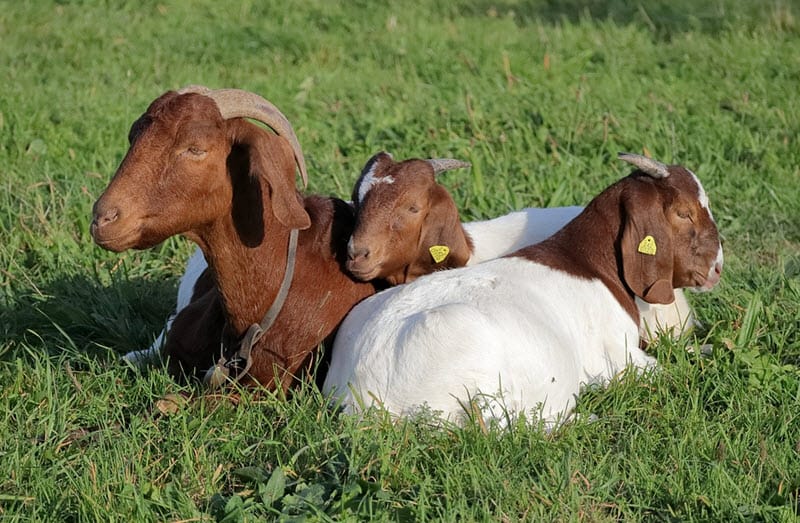


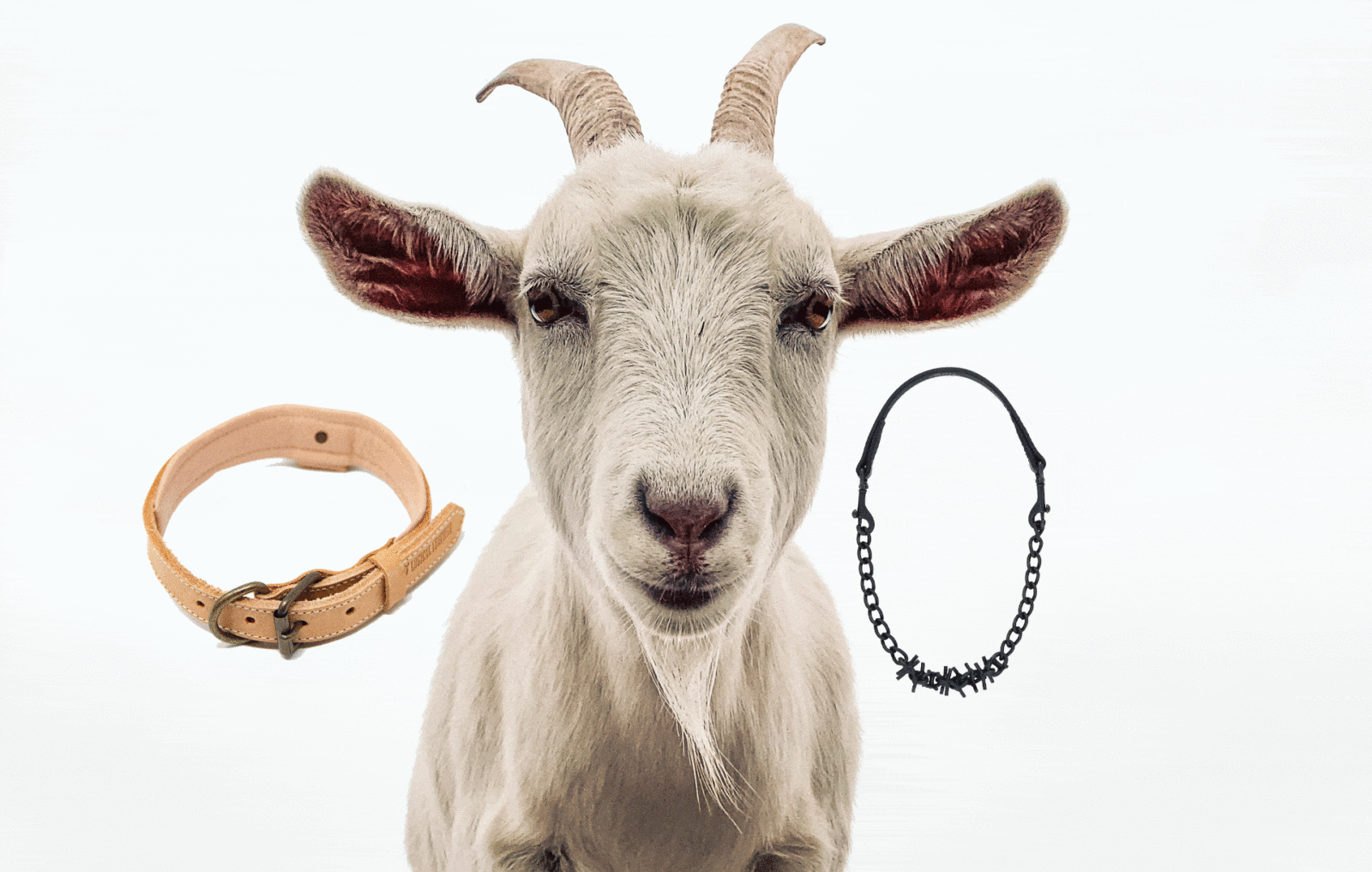
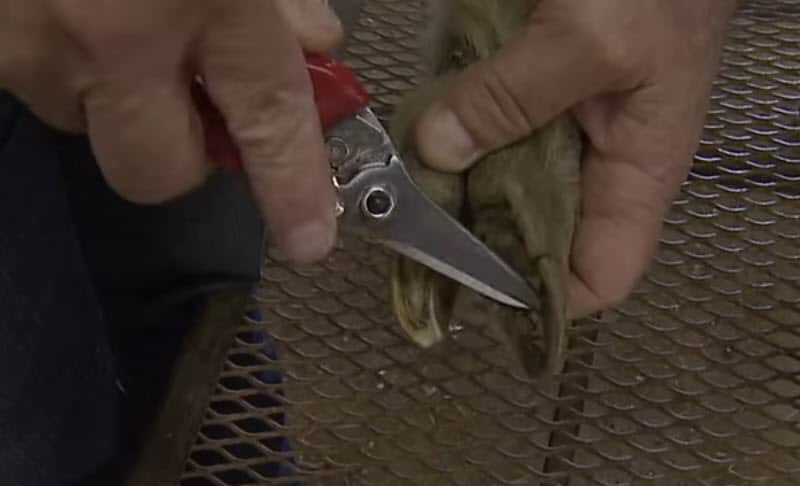

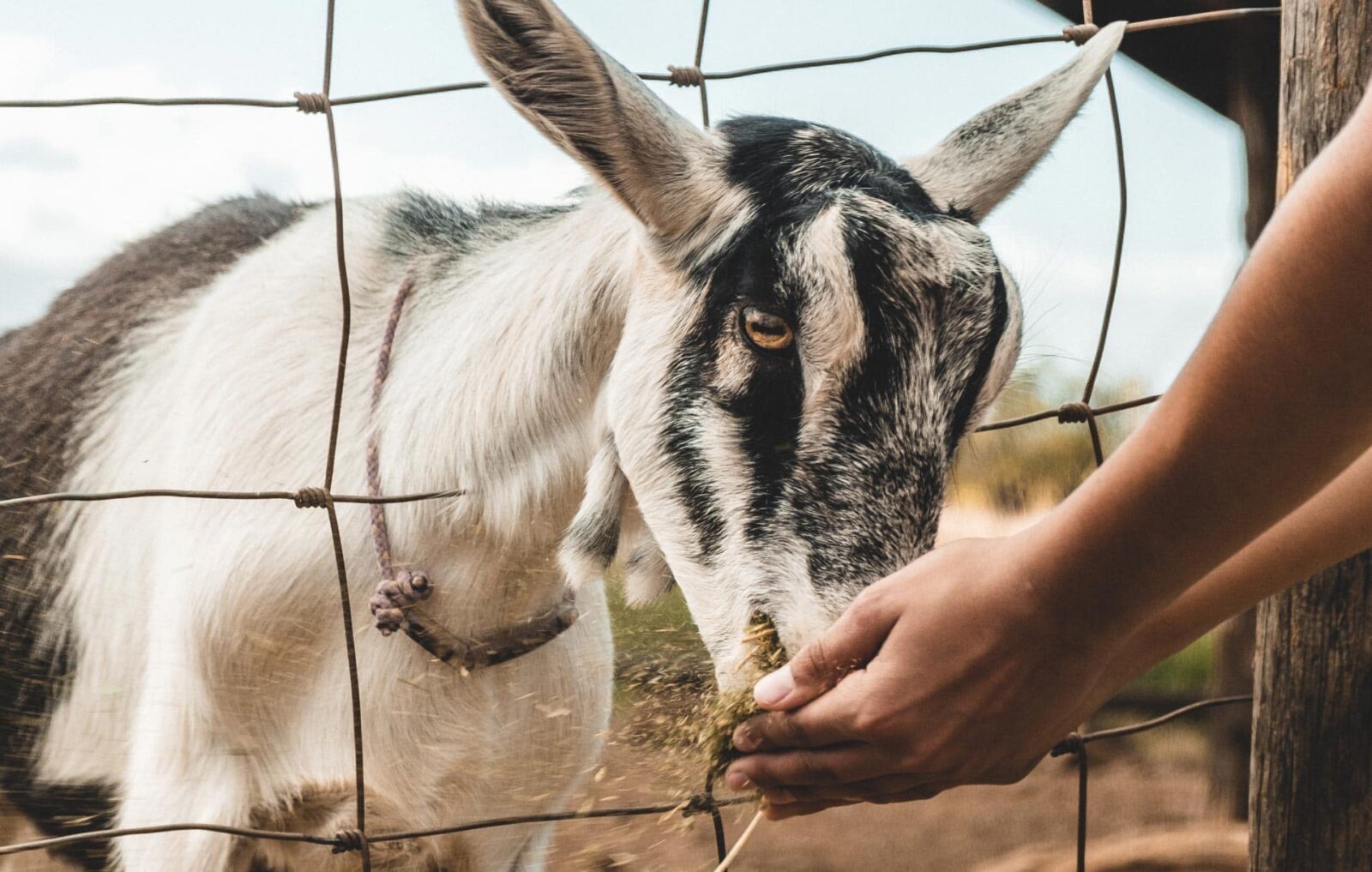
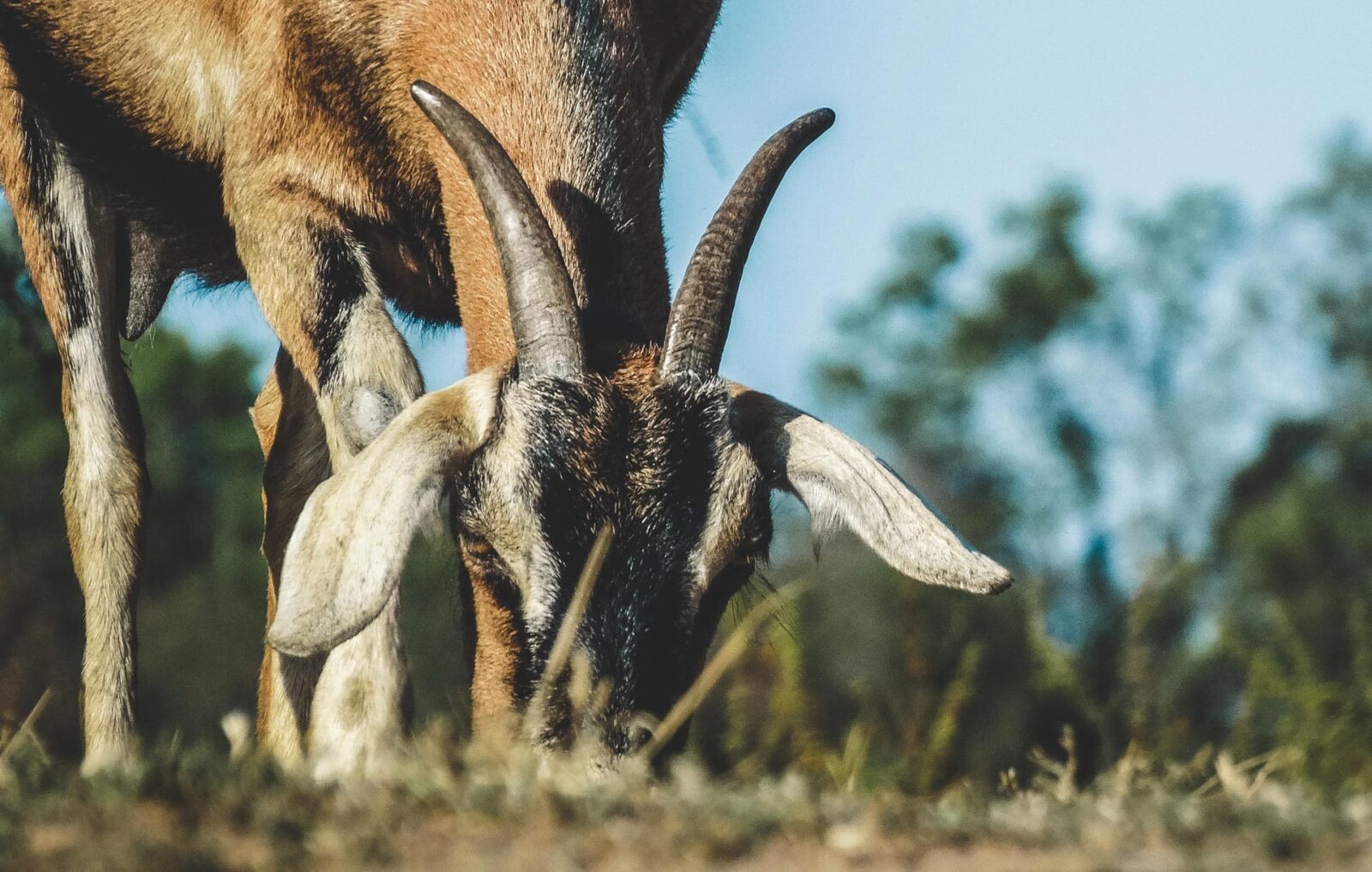


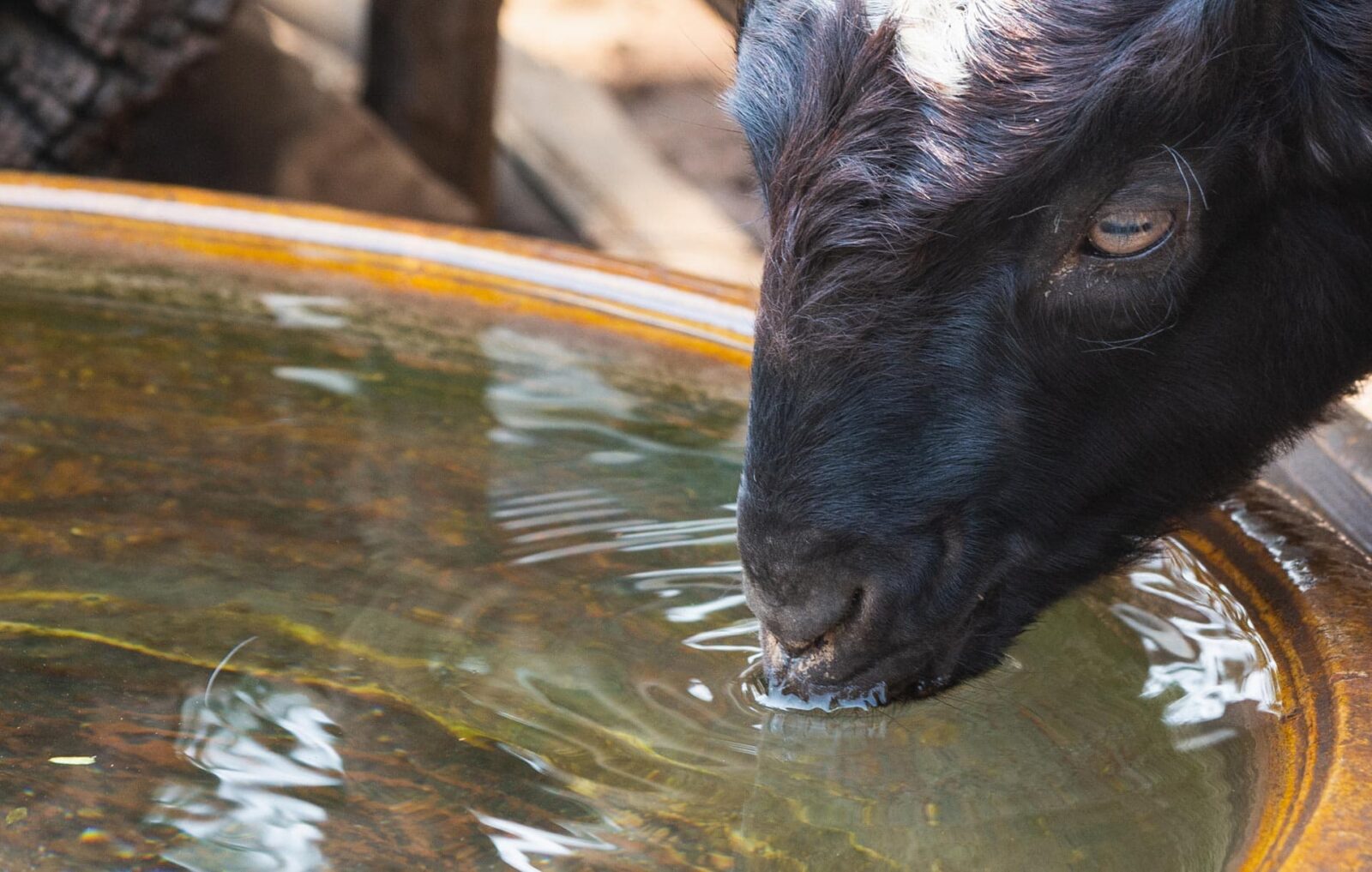

Comment (1)
[…] nose, the Boer goat is a friendly pet that enjoys its time outside. Weighing about 200 pounds, this breed is more popular for its meat. Although it is not tall, it is wider than other breeds. Due to its size, young children may not […]